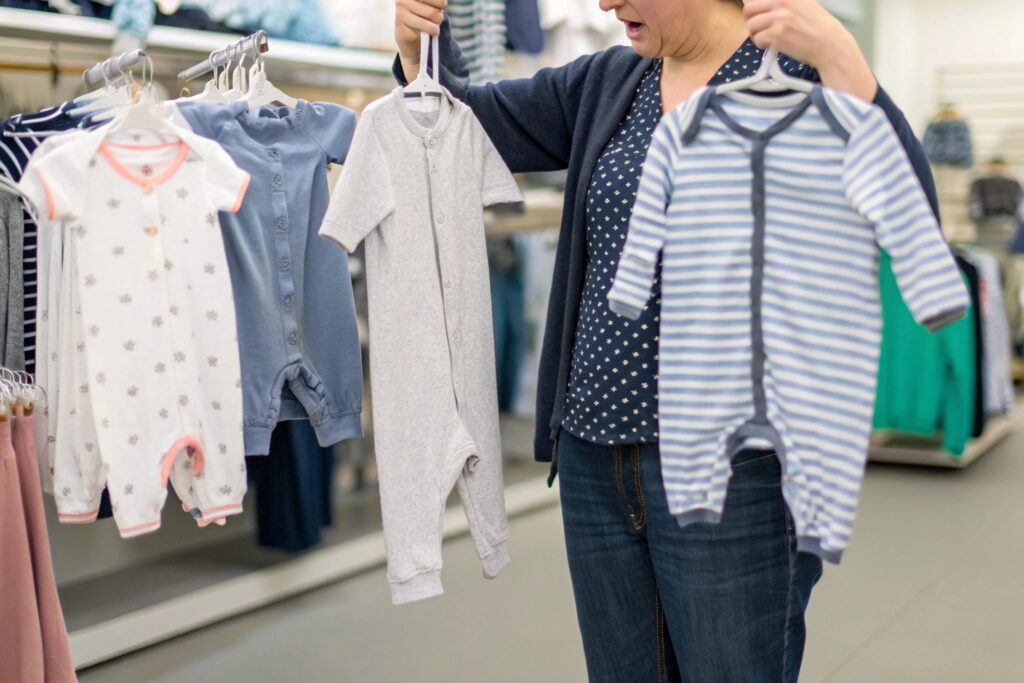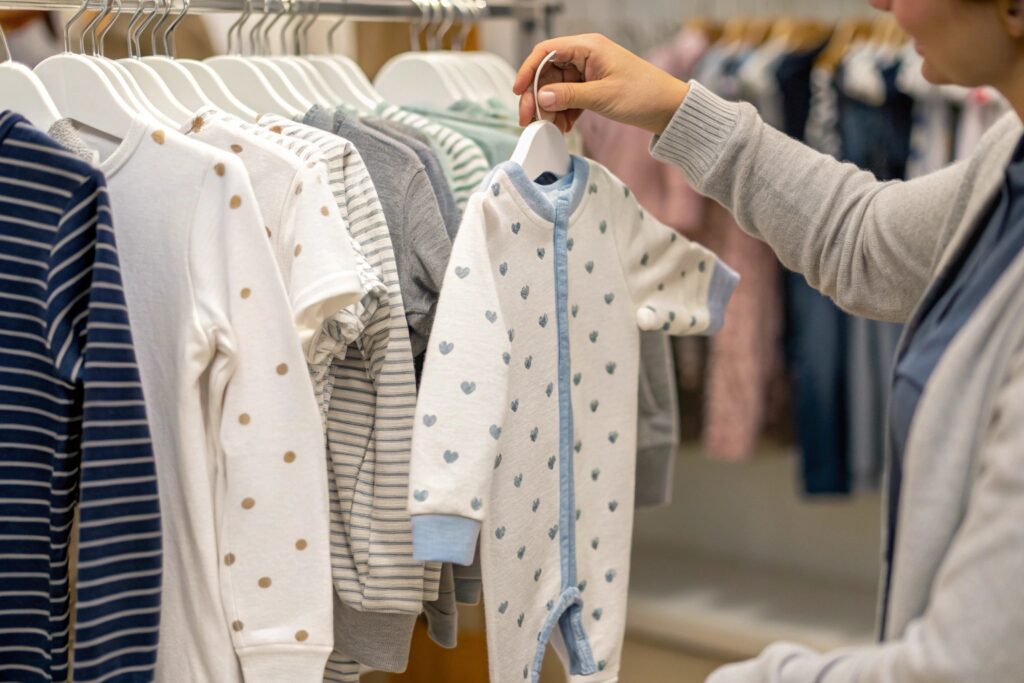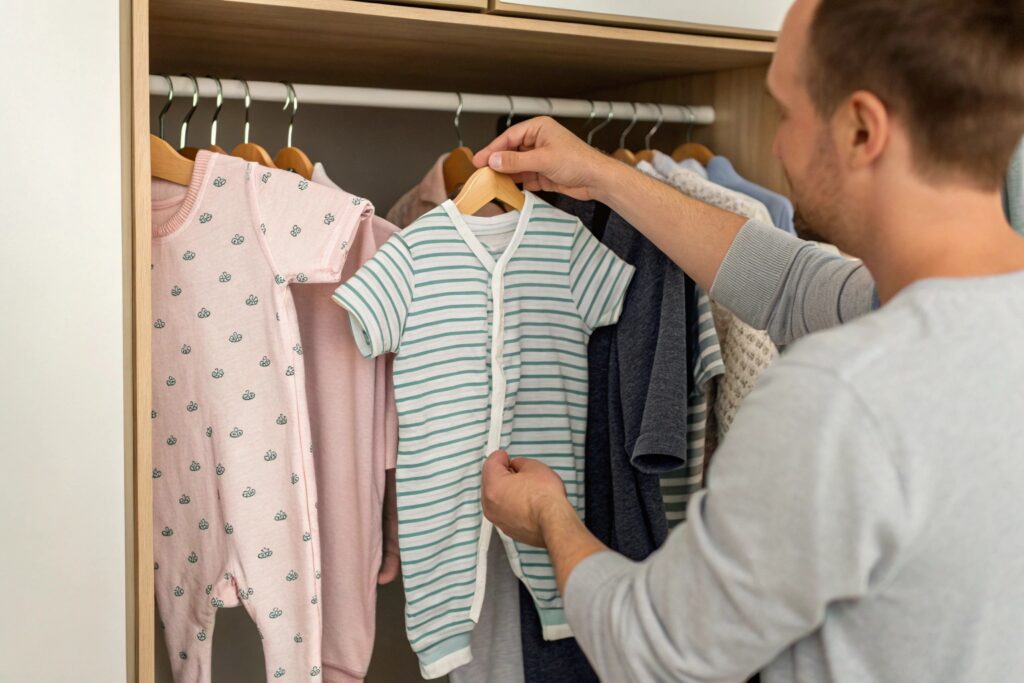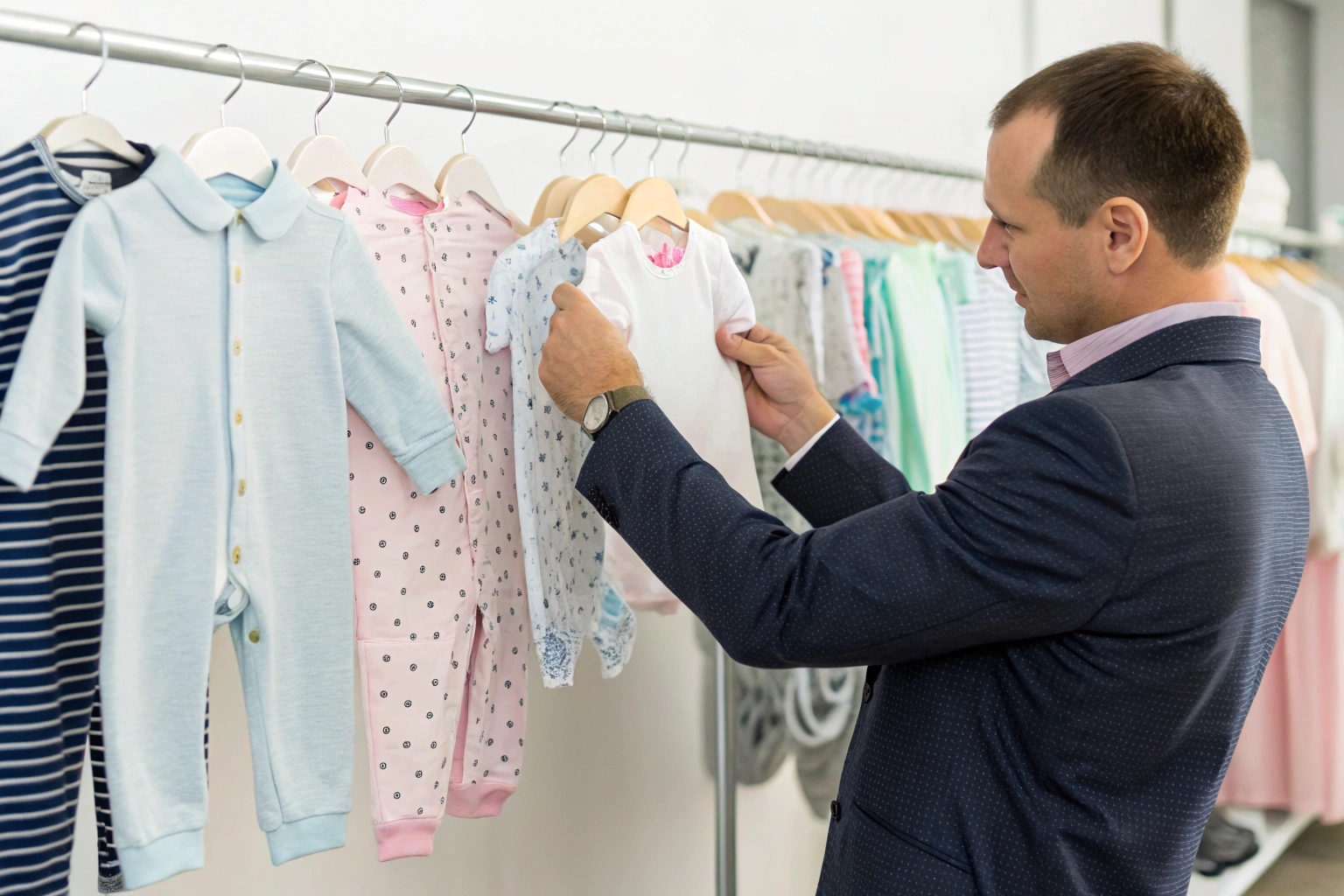Cute prints and tiny rompers may seem fun—but for most parents, shopping for baby clothes quickly turns into confusion, overspending, and waste.
Parents still find baby clothes frustrating to buy because of inconsistent sizing, short wear time, limited practicality, and fast outgrowth.
Let me share what I’ve learned from speaking with parents, working with babywear buyers, and launching newborn collections—why it’s not as simple as “just buy the cute one.”
What Challenges Do Parents Face When Buying Kids' Clothes?
Parents are already tired and overwhelmed. Add in confusing size charts and pricey clothes that last three weeks, and shopping becomes a headache—not a joy.
Parents face frustration from poor sizing, low durability, fast outgrowth, tricky care labels, and clothes that prioritize style over comfort.

Why do so many baby outfits look cute but fail when it comes to practicality, comfort, or washability?
Designers often make clothes for the camera—not the nursery. Some brands focus on aesthetics—frills, buttons, embroidery—that look great on Instagram but irritate a baby’s skin. Others use low-quality fabric blends that shrink or stretch after two washes. Parents also complain about care labels with confusing instructions, or snaps that break after a few uses.
Here’s what I hear most often:
| Common Complaint | Why It Happens |
|---|---|
| Sizing inconsistent | Brands use different fit standards |
| Difficult diaper access | Fashion over function design |
| Fabric irritates skin | Synthetic or chemically dyed fabrics |
| Too many care steps | Delicate fabrics or unclear labels |
How do these frustrations impact babywear brands or retailers?
Returns and negative reviews go up. Parents won’t come back to a brand that gave them a bad experience—even if the design was cute. If I’m creating a babywear line, I focus on solving these issues first. That’s how to earn long-term trust.
Is There Any Point Buying Newborn Clothes?
Many new parents buy loads of newborn outfits—only to realize their baby outgrows them in days. Some wonder if buying them at all makes sense.
Buying newborn clothes still makes sense, but only in small amounts—prioritizing essentials like sleepsuits and bodysuits over trendy pieces.

Why do babies outgrow newborn sizes so fast—and what should parents actually buy?
Newborns gain weight quickly. A baby born at 4kg may only fit into “0–1M” clothes for two weeks. I recommend parents buy no more than 5–7 key pieces in newborn size:
- 3–4 cotton sleepsuits with zippers or snaps
- 2–3 short-sleeve bodysuits
- 1–2 hats and mittens
That covers the basics. I also tell buyers and retailers to offer multi-size bundles—like a 0–3M and 3–6M twin pack—so parents feel prepared for growth spurts.
How can brands and retailers help parents buy smarter?
Labels like “Up to 9 lbs” or “Room to Grow Fit” can guide parents better than vague tags like “newborn.” Retailers can also add shopping guides, growth charts, or starter pack options. I’ve seen sales increase when we help parents choose wisely—not just emotionally.
Should Parents Choose Their Children's Clothes?
As kids grow, many parents let children pick their own outfits. But some wonder—should they? And when is the right time to stop choosing for them?
Parents should choose clothes in the baby stage, but slowly allow choice as kids grow—building independence while ensuring comfort and function.

Why do parents often clash with their children over clothing—and how can brands help?
Kids often want fun prints or flashy designs. Parents want easy-care, safe fabrics, and appropriate styles. The gap creates stress during shopping. I’ve seen brands win by offering choices that satisfy both sides:
- Reversible jackets (fun + functional)
- Pajamas with educational prints (dinosaurs, alphabets)
- Bright colors in soft organic cotton
These styles give kids expression without compromising on safety or quality.
How does this shift in choice impact babywear collections?
It doesn’t affect newborn ranges much. But toddler collections (12M–3Y) benefit from kid-friendly design. That’s when children start forming opinions. I’ve adjusted entire product lines to reflect this—adding more colors, animal themes, and textures—without losing fabric quality or sizing accuracy.
How Much Do Parents Spend on Baby Clothes?
Babywear might be tiny, but the bills add up fast. From first outfits to endless laundry backups, many parents are shocked at the final cost.
On average, parents in the U.S. spend $500–$700 per year on baby clothes, with most of it spent in the first 12 months.

What drives high spending on babywear, and where does it all go?
Most of the spending happens because of:
- Frequent growth (babies outgrow sizes every 2–3 months)
- Seasonal changes (new outerwear, sleepwear, summerwear)
- Special occasions (holidays, photoshoots, gifting)
Here’s a typical babywear cost breakdown for year one:
| Category | Avg. Spend ($USD) |
|---|---|
| Daily clothes | 250 |
| Pajamas/sleepsuits | 100 |
| Outerwear | 80 |
| Accessories | 40 |
| Gifted items | 100+ |
How can brands adapt to price-sensitive yet style-conscious parents?
Bundle deals, size-up packs, and subscription boxes are becoming more popular. I’ve seen success with “Grow With Me” lines that stretch through multiple sizes. Also, offering a mix of budget basics and premium pieces helps parents spend smarter—without feeling like they’re missing out on quality.
Conclusion
Buying babywear should feel joyful—but often becomes a frustrating cycle of poor fit, fast waste, and money lost. The best brands solve real parent problems, not just design trends.










